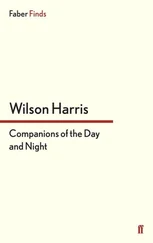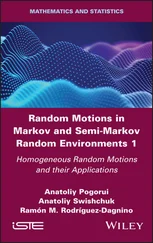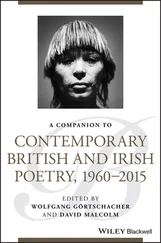A Companion to Motion Pictures and Public Value
Здесь есть возможность читать онлайн «A Companion to Motion Pictures and Public Value» — ознакомительный отрывок электронной книги совершенно бесплатно, а после прочтения отрывка купить полную версию. В некоторых случаях можно слушать аудио, скачать через торрент в формате fb2 и присутствует краткое содержание. Жанр: unrecognised, на английском языке. Описание произведения, (предисловие) а так же отзывы посетителей доступны на портале библиотеки ЛибКат.
- Название:A Companion to Motion Pictures and Public Value
- Автор:
- Жанр:
- Год:неизвестен
- ISBN:нет данных
- Рейтинг книги:3 / 5. Голосов: 1
-
Избранное:Добавить в избранное
- Отзывы:
-
Ваша оценка:
- 60
- 1
- 2
- 3
- 4
- 5
A Companion to Motion Pictures and Public Value: краткое содержание, описание и аннотация
Предлагаем к чтению аннотацию, описание, краткое содержание или предисловие (зависит от того, что написал сам автор книги «A Companion to Motion Pictures and Public Value»). Если вы не нашли необходимую информацию о книге — напишите в комментариях, мы постараемся отыскать её.
A Companion to Motion Pictures and Public Value
Companion
A Companion to Motion Pictures and Public Value
A Companion to Motion Pictures and Public Value — читать онлайн ознакомительный отрывок
Ниже представлен текст книги, разбитый по страницам. Система сохранения места последней прочитанной страницы, позволяет с удобством читать онлайн бесплатно книгу «A Companion to Motion Pictures and Public Value», без необходимости каждый раз заново искать на чём Вы остановились. Поставьте закладку, и сможете в любой момент перейти на страницу, на которой закончили чтение.
Интервал:
Закладка:
Contradictory values exist in the juxtaposition between nothingness and wholeness. In the philosophical scheme of Sufism, it is indicated that “from nothingness, from silence, from darkness, existence was brought forth” (Michon 2006, 160). This is how the absent and present become one. Reaching the state of nothingness could lead the seeker to silence (as asserted in Rumis’s Ghazal 2219), to doubt, and to challenging the status quo. It leads an uncertain seeker to pass the realm of absolutism and to embrace the domain of non-absolutism. Celebrating heechness is an act of defiance, a form of silent protest.
Therefore, the concept of nothingness connotes diverse meanings in Persian culture. To have hope in nothingness is to have hope in emancipation, even in failing. 5For a nation that was repeatedly faced with atrocities, tragedy, and desolation, hope could emerge out of nothingness. This recalls Terry Eagleton’s concept of a tragic, radical hope emerging from ruin. The concept of hope for heech is similar to Eagleton’s formulation, according to which “the most authentic kind of hope is whatever can be salvaged, stripped of guarantees, from a general dissolution” (2015, 114). Hope for heech is gratifying because heech is not a flat nothingness (in a literal negative way). Heech is the point of integration of the contradictory elements of life and death, love and loss, darkness and light, and absence and presence. Attaining heech is the moment when the quest becomes more significant than reaching the goal, when desire takes precedence over the subject of love. There may be failure, but it is a graceful failure. So even if the ending is not happy, it is at least a transcendental moment that signifies the completion of a quest. In light of the merging of nothingness and wholeness, and a hope for heech , notions such as gratification in a search for an impossible love, and contemplation and acceptance of death become significant in Iranian films. In a similar fashion, the hope for heech makes the recurrent concepts of indetermination and non-absolutism notable subjects of Iranian films.
There are traces of hope for nothing in the New Wave cinema of the 1960s and 1970s, but over time, the concept has taken a more sophisticated and philosophical form in cinematic productions. This is both visible in art-house and in popular movies. The aesthetics of hope for heech , a shared value among filmmakers and filmgoers in the context of Iranian cinema has been represented in various ways, such as an infatuation with an impossible love and a thirst for union, death awareness, and even celebrating the end of life. In acknowledging the absurdity of life and the uncertainties surrounding humanity’s state of being.
In films such as Separation (2011, dir. Asghar Farhadi), Certified Copy (2010, dir. Abbas Kiarostami), Just 6.5 ( Metri Shehsh o Nim , 2019, dir. Saeed Rustayi), African Violet (2019, dir. Mona Zandi Haghighi), Verdict (2005, dir. Masud Kimiai), and The Love-Stricken , an impossible or inconclusive love is portrayed. Separation pictures a world of divisions, separations, distinctions, and even connections that set borders between people. Farhadi masterfully challenges the juxtaposition of binary oppositions such as modernity vs. tradition, honesty vs. dishonesty, and secular mind-sets vs. religious attitudes. One of the least noticed binary oppositions that is represented in the film is love vs. lack of love. Simin and Nader are going to get separated as their paths get divided. But when Nader’s life becomes complicated and he gets arrested, the couple are temporarily reunited. It is a brief reunion that will shatter their daughter’s hopes for their reunion. The hope for heech in this film is a bittersweet one for audiences as well.
The Persian title of the film is Jodai-ye Nader az Simin , or Separation of Nader from Simin . The inclusion of the couple’s names in the Persian title is significant because the title of many romantic stories in Persian literature includes the names of characters. Nezami Ganjavi’s masterpieces such as Khosrow and Shirin, Leyli and Majnun , and Ferdowsi’s Rostam and Tahmineh, Siyavash and Farangis , and Gorgani’s classical romance, Vis and Ramin are examples of such stories. Stories that bear the romantic couple’s names in Persian have a particular appeal for audiences. Sweet moments of lovemaking in such stories are combined with disappointing instances of separation. Most romantic stories in Persian literature end unhappily or inconclusively. Iranian readers of classical literature know from the very beginning that they are likely not going to be rewarded with a happy ending, yet these stories are the most beloved in Iranian culture. Separation of Nader from Simin is a modern, and more pessimistic version of such stories. It bears the term “separation” in the title. The audience, right from its beginning, knows that this is a story of separation, not (re)union. The narrative does not describe the beginning of the romance either. In other words, it starts in media res (in the midst of the story), that depicts the bitter part of their relationship. Separation is the story of the termination of love. The spectators’ hope for heech is fulfilled by the raising of questions about the nature of love and affection between people. It shows how love can be transformed with changes in social and personal circumstances in the modern era.
In a similar way, the temporary union of Elle/she and an art scholar in Certified Copy portrays an ambiguous and inconclusive love. In a sequence in the film, the scholar, who could be seen as Kiarostami’s alter ego, questions the permanency of love in a relationship. He quotes the translation of a part of a poem by M. Omid—“the garden of leaflessness, who dares to say that it isn’t beautiful?”—implying the parallel elegance between the end of love and the blooming of love. Certified Copy crushes any hopes for understanding even the nature of love between the two characters. The beautiful scenery of Tuscany, a handsome couple drinking wine, driving and walking together, and a sophisticated and thought-provoking discussion between them is all the viewers get. As in other films by Kiarostami, the fragmented moments of happiness remind us that life and love are transitory; wholeness is only achieved in understanding nothingness.
In African Violet , when an ailing ex-husband is abandoned in a nursing home, the ex-wife decides to bring him to her home with her new partner. The three of them find new connections that are reminiscent of their bittersweet past lives and the ironic and mystifying affections that they have had for one another. The tragic, painful, and impossible love of a daring woman for two men is portrayed in a poetic mise-en-scene that is the hallmark of Iranian art-house cinema. African Violet is a celebration of colors, dreams, affections, and resoluteness, but also of the indeterminacies of a woman who finds love and lack of love in both of her marriages. The ailing man feels rejuvenated in his ex-wife’s company, but his son takes him back to the nursing home, where he dies in despair. The woman gains not only joy, but also pain in her acts of kindness throughout the narrative. The aesthetics of a hope for heech creates a lyrical cinematic experience for spectators.
As in many other social realist films, the movie Just 6.5 represents the impossible love, which makes social failures and shortcomings even more painful for its characters. In Just 6.5 , a drug lord, waiting to be executed, is absurdly in love with a woman who had abandoned him and later disclosed his name to the cops.
Читать дальшеИнтервал:
Закладка:
Похожие книги на «A Companion to Motion Pictures and Public Value»
Представляем Вашему вниманию похожие книги на «A Companion to Motion Pictures and Public Value» списком для выбора. Мы отобрали схожую по названию и смыслу литературу в надежде предоставить читателям больше вариантов отыскать новые, интересные, ещё непрочитанные произведения.
Обсуждение, отзывы о книге «A Companion to Motion Pictures and Public Value» и просто собственные мнения читателей. Оставьте ваши комментарии, напишите, что Вы думаете о произведении, его смысле или главных героях. Укажите что конкретно понравилось, а что нет, и почему Вы так считаете.












